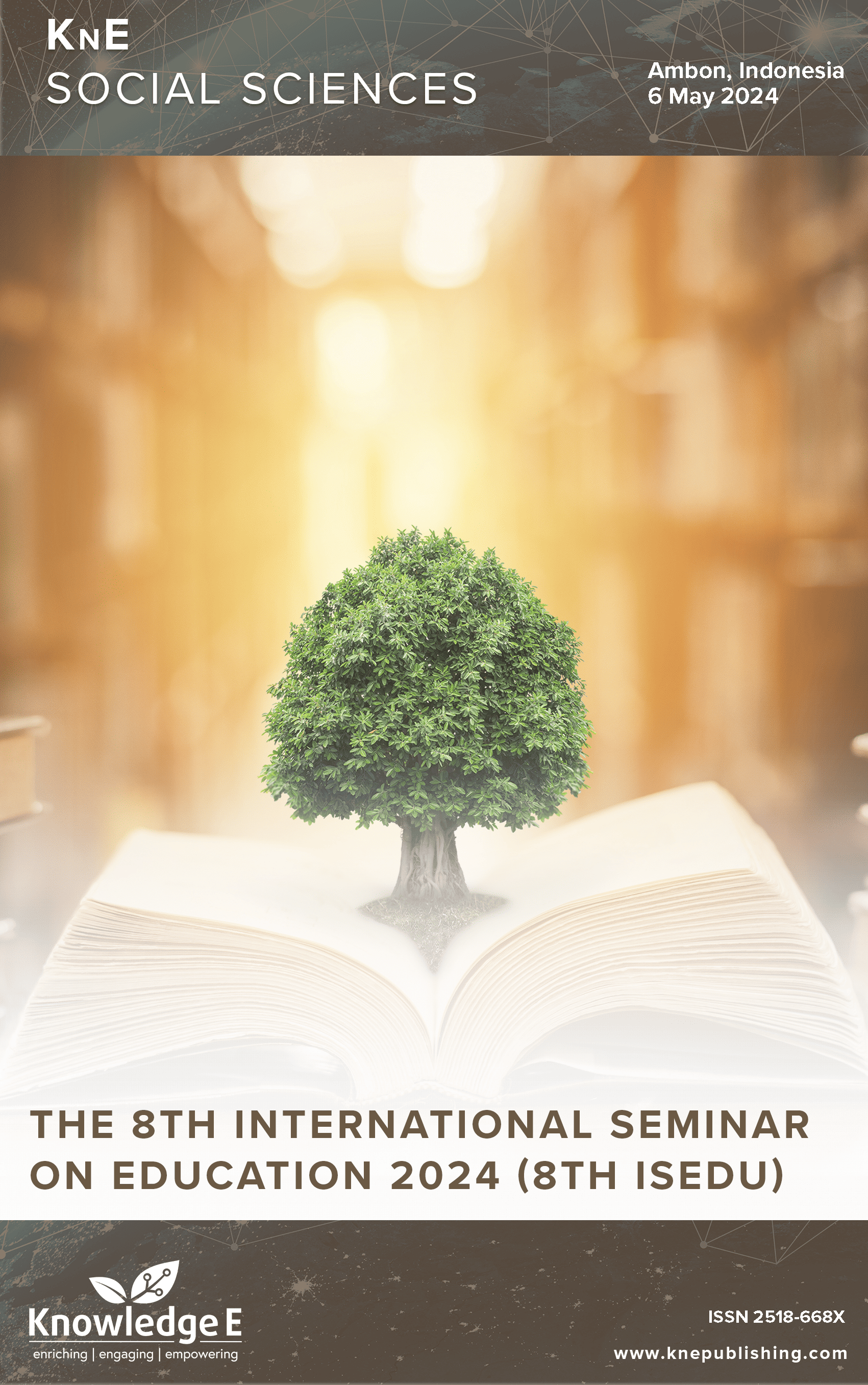Antioxidant Activity of Hotong (Setaria italica) Seeds from Buru and its Implications for Biochemistry Learning
DOI:
https://doi.org/10.18502/kss.v9i31.17547Abstract
Hotong Buru seeds (Setaria italica) are a local wisdom food ingredient in South Buru Regency, Maluku Province, Indonesia. These hotong seeds are widely consumed by the people of South Buru as a staple food substitute for rice. Hotong Buru seeds contain bioactive components that have antioxidant properties, including tannins and Vitamin E. Tannins are polyphenols, one of the anti-nutrients found in food ingredients. These components are mostly contained in the epidermis. This research aims to analyze the antioxidant activity of Hotong Buru (Setaria italica) seeds and their implication for Biochemistry Learning. Antioxidant analysis was conducted using 1,1-dephenyl-2-picryl-hydrazyl (DPPH) as a free radical. Descriptive analysis was used to describe the chemical composition and quality of Hotong Buru seeds in tables and graphs. Inferential analysis was done using one way ANOVA technique to analyze the effect of food quality. All data were presented descriptively, and antioxidant activity was calculated using the SPSS Program. The results showed that Hotong seeds from Buru Island positively contain secondary metabolite compounds such as alkaloids, flavonoids, terpenoids, steroids, tannins, and saponins. The content of these secondary metabolites can act as antioxidants for the human body. Antioxidants are very important to delay or inhibit damage to molecular compounds. In addition, the results of this study are implicated in biology learning, especially biochemistry, food science, and nutrition courses. The phytochemical test showed that there were antioxidants in Hotong Buru seeds ingredients, there are alkaloids, flavonoids, steroids, tannins, terpenoids, and saponins. The implications of research results for biology learning have been made clear in the form of practical instructions that have been applied to students of the Pattimura University Biology Education Study Program.
Keywords: Hotong buru, antioxidants, culinary ingredients, biochemistry learning
References
Cut Fatimah Zuhra. Juliati Br.Tarigan dan HS. SENYAWA FLAVONOID DARI DAUN KATUK (Sauropus androgunus (L) Merr. ). J Biol Sumatera. 2008;3(1):10–3.
Lobo V, Patil A, Phatak A, Chandra N. Free radicals, antioxidants and functional foods: impact on human health. Pharmacogn Rev. 2010 Jul;4(8):118–26. DOI: https://doi.org/10.4103/0973-7847.70902
Modul P, Interaktif M, Kelas S, Sma XI, Model D, Sari YN, et al. Digital Digital Repository Repository Universitas Universitas Jember Jember Digital Digital Repository Repository Universitas Universitas Jember Jember. 2017;
Vanmathi SM, Monitha Star M, Venkateswaramurthy N, Sambath Kumar R. Preterm birth facts: A review. Res J Pharm Technol. 2019;12(3):1383–90. DOI: https://doi.org/10.5958/0974-360X.2019.00231.2
Ningrum DW, Kusrini D, Fachriyah E. Uji Aktivitas Antioksidan Senyawa Flavonoid dari Ekstrak Etanol Daun Johar (Senna siamea Lamk). J Kim Sains dan Apl. 2017;20(3):123–9. DOI: https://doi.org/10.14710/jksa.20.3.123-129
Mishra K, Ojha H, Chaudhury NK. Estimation of antiradical properties of antioxidants using DPPH- assay: A critical review and results [Internet]. Food Chem. 2012;130(4):1036–43. DOI: https://doi.org/10.1016/j.foodchem.2011.07.127
Abts M, Sami FJ, Rahimah S, Tinggi S, Farmasi I. 3. Fitriyanti. 2(2):107–10. DOI: https://doi.org/10.33096/jffi.v2i2.179
Maisuthisakul P, Pasuk S, Ritthiruangdej P. Relationship between antioxidant properties and chemical composition of some Thai plants. J Food Compos Anal. 2008;21(3):229–40. DOI: https://doi.org/10.1016/j.jfca.2007.11.005
Handayani S, Najib A, Wisdawati W, Khoiriyah A. Aktivitas Antioksidan Caulerpa lentillifera J. Agardh dengan Metode Perendaman Radikal Bebas 1, 1-diphenyl-2 picrylhydrazil. J Chem Inf Model. 2020;53(9):1689–99. DOI: https://doi.org/10.22487/j24428744.2020.v6.i1.15022
Kesuma Y. Antioksidan Alami dan Sintetik. 2015. 15–16 p.
Chanda S, Dave R. In vitro models for antioxidant activity evaluation and some medicinal plants possessing antioxidant properties : an overview. Afr J Microbiol Res. 2009;3(13):981–96.
Król J. Perbandingan ekstrak daun sirih. Found Phys. 2015;34(3):361–403. DOI: https://doi.org/10.1023/B:FOOP.0000019620.04821.a2
Yuhernita J. Analisis Senyawa Metabolit Sekunder dari Ekstrak Metanol Daun Surian yang Berpotensi sebagai Antioksdan. Fak Kedokt Univ Yars Jakarta. 2011;15(1):48– 52.
Niyaz A. Isolation and identification of secondary metabolites producing organisms from marine sponge. Discovery (Read). 2012;1(1):14–7.
LANNA F. No 主観的健康感を中心とした在宅高齢者における 健康関連指標に関する共分散構造分析Title [Internet]. J Teknol. 2013;1(1):69

